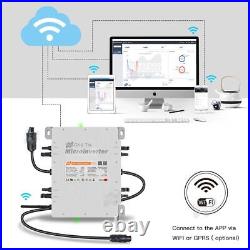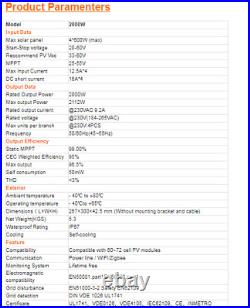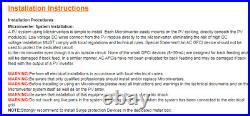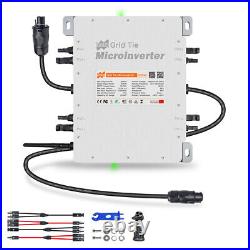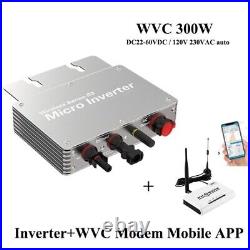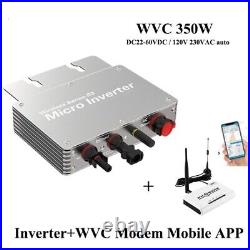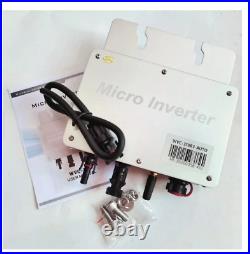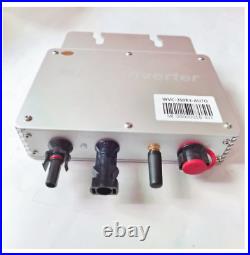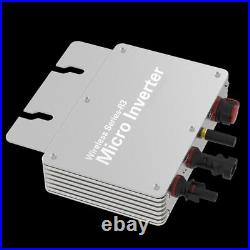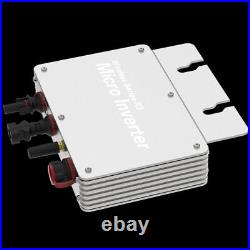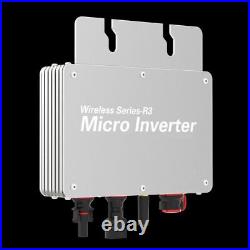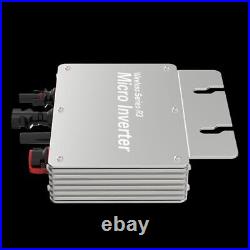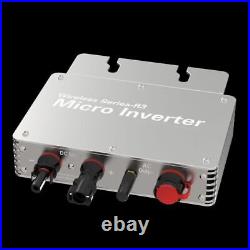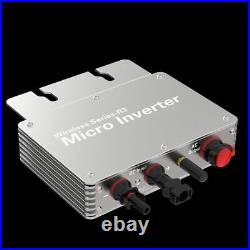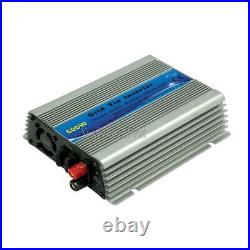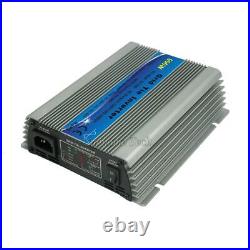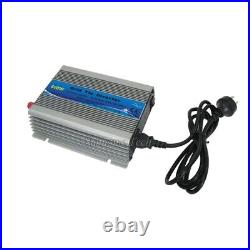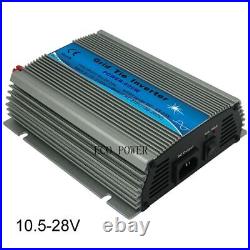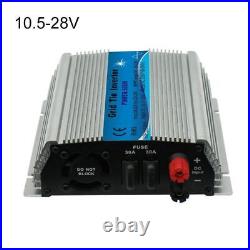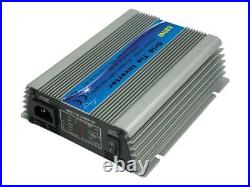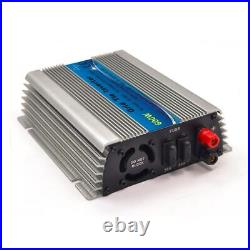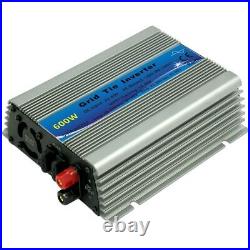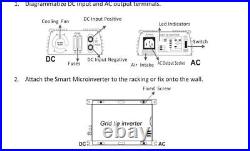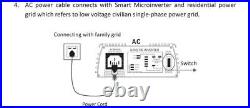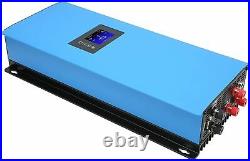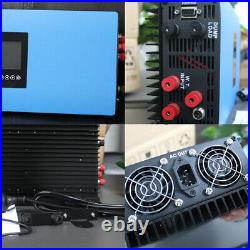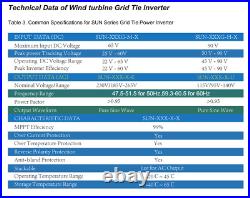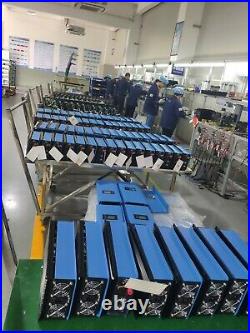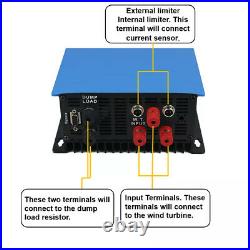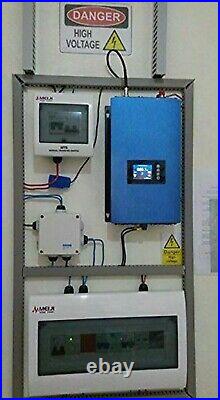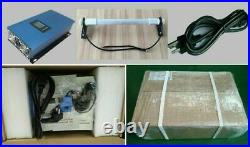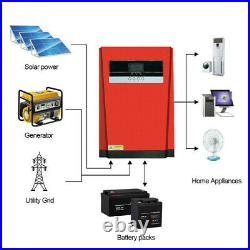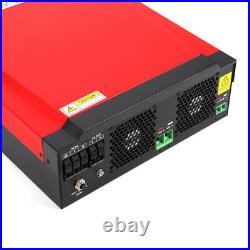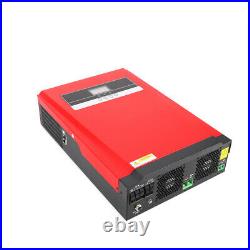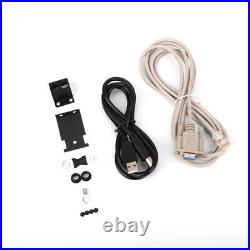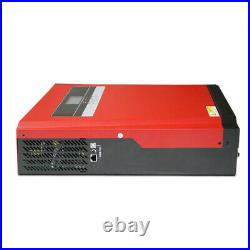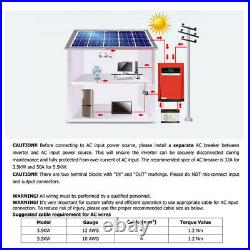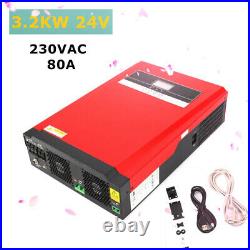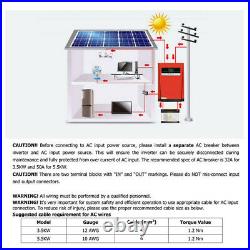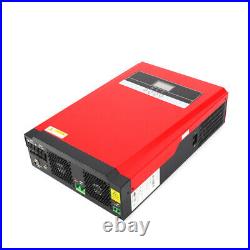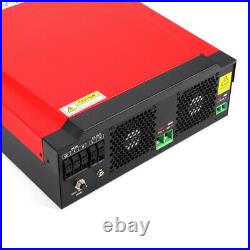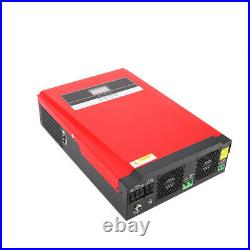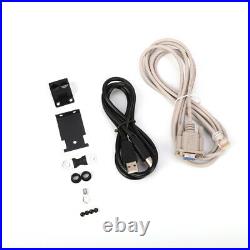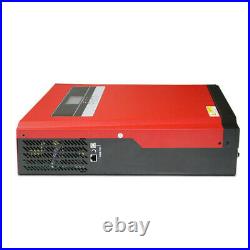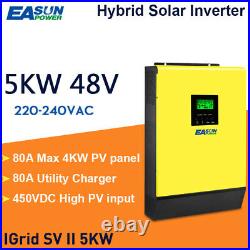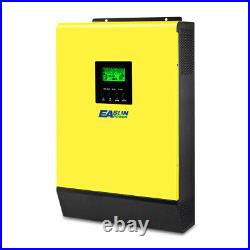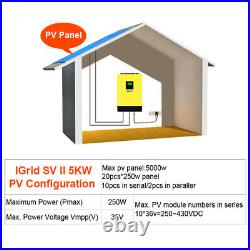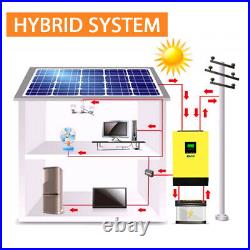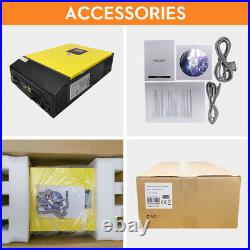


2000W Grid Tie Solar Inverter 4 MPPT Micro Inversor Solar Panel 230VAC 240V WIFI. DC input current of 12.5A, adapt to 600W PV module. The Microinverter is used in utility-interactive grid-tied applications, comprised of two key elements: Microinverter Router. If the wireless signal in the area where the microinverter is weak, it is necessary to add a wifi signal booster at a suitable place between the router and the microinverter. This integrated system improves safety; maximizes solar energy harvest;increases system reliability, and simplifies solar system design, installation, maintenance, and management. Microinverters Maximize PV Energy Production. Each PV module has individual Maximum Peak Power Tracking (MPPT) controls, which ensures that the maximum power is exported to the utility grid regardless of the performance of the other PV modules in the array. When PV modules in the array are affected by shade, dust, orientation, or any situation in which one module underperforms compared with the other units, the Microinverter ensures top performance from the array by maximizing the performance of each module within the array. More Reliable than Centralized or String Inverters. The distributed Microinverter system ensures that no single point of system failure exists across the PV system. Microinverters are designed to operate at full power at ambient outdoor temperatures of up to 149? You can install individual PV modules in any combination of Module quantity, orientation, different type and power rate The Ground wire (PE) of the AC cable is connected to the chassis inside of the Microinverter, potentially eliminating the installation of grounding wire (check local regulation). Data collection adopts internal wifi, wireless router is needed near the microinverter. When complete the installation of microinverter, configure wireless router with internal wifi(refer to the wifi user manual). The data will be uploaded automatically. Users can monitor and manage the microinverter through corresponding website or APP. The Microinverters connect with the single-phase grid, and can also use multiple Micro inverters in the form of single-phase grid to achieve three-phase grid. Max units per branch. 267×300×42.5 mm (Without mounting bracket and cable). Compatible with 6072 cell PV modules. Power line / WIFI/Zigbee. DIN VDE 1026 UL1741. Installation Procedures Microinverter System Installation. A PV system using Microinverters is simple to install. Each Microinverter easily mounts on the PV racking, directly beneath the PV module(s). Low voltage DC wires connect from the PV module directly to the Microinverter, eliminating the risk of high DC voltage. Installation MUST comply with local regulations and technical rules. An AC GFCI device should not be used to protect the dedicated circuit to the microinverter even though it is an outside circuit. None of the small GFCI devices (530mA) are designed for back feeding and will be damaged if back feed. In a similar manner, AC AFCIs have not been evaluated for back feeding and may be damaged if back feed with the output of a PV inverter. Perform all electrical installations in accordance with local electrical codes. Be aware that only qualified professionals should install and/or replace Microinverters. Before installing or using an Microinverter, please read all instructions and warnings in the technical documents and on the Microinverter system itself as well as on the PV array. Be aware that installation of this equipment includes the risk of electric shock. Do not touch any live parts in the system, including the PV array, when the system has been connected to the electrical grid. Strongly recommend to install Surge protection Devices in the dedicated meter box. Step 1- Install the AC branch circuit junction box. Install an appropriate junction box at a suitable location on the PV racking system (typically at the end of a branch of modules). Connect the open wire end of the AC cable into the junction box using an appropriate gland or strain relief fitting. Wire the conductors of the AC(230/400Vac): L – red; N – black ;PE – yellow green. Connect the AC branch circuit junction box to the point of utility Interconnection. WARNING: Wiring colour code can be diferent according local regulation, check all the wires of the installaton before connecting to the AC cable to be sure they match. Step 2- Attach the Microinverters to the racking or the PV module frame. Mark the location of the Microinverter on the rack, with respect to the PV module junction box or any other obstructions. Mount one Microinverter at each of these locations using hardware recommended by your module racking vendor. WARNING: Do not place the inverters (including DC and AC connectors) where exposed to the sun, rain or snow, even gap between modules. Allow a minimum of 3/4 1.5cm. Between the roof and the bottom of the Microinverter to allow proper air flow. Step 3 – Connect the microinverters in parallel. Check the Microinverter technical data page 5 for the maximum allowable number of Microinverters on each AC branch circuit. WARNING: DO NOT exceed maximum number of Microinverters in an AC branch circuit, as displayed on the page 5 of this manual. Step 4- Install an AC cable protective end cap at the end of AC cable. Step 5 – Connect Microinverter to the PV Modules. When plugging in the DC cables, if AC already available, the Microinverter should immediately blink red light and will start work within the setting time (default 60 seconds). If AC is not available, the red light will blink 3 times quickly and repeat after one second until AC is connected. Microinverter System Operating Instructions To operate the microinverter PV system: 1. Turn ON the AC circuit breaker on each microinverter AC branch circuit. Turn ON the main utility-grid AC circuit breaker. Your system will start producing power after a one-minute waiting time. The units should start blinking red one minutes after turning on the AC circuit breaker. Then blue led blinking. This means they are producing power normally, the faster blinking of the blue led means more power generated. Configure the internal wifi module according to its user manual. NOTE: When AC power is applied but the microinverter not started up, about 0.1A current and 25VA(W) power for each microinverter may be measured by a power meter. This power is reactive power, not consume from utility grid. There may be some delays due to flight, holiday, weather, local post, local natural disaster impact. It must also be in the original packaging. This item is in the category “Home & Garden\Home Improvement\Electrical Supplies\Alternative Energy Supplies\Alternative Energy Chargers & Inverters”. The seller is “rodonite-7″ and is located in this country: CN. This item can be shipped worldwide.
- Color: Inverter 5M AC cable
- Input Voltage: 20-60V
- Output Voltage: 230V(184-265V)
- Size: 267 * 300 * 42.5 mm
- Model: 8991503531
- Country/Region of Manufacture: China
- Output Power: 2112W(Maximum)
- Output Type: 230V / 184-265
- Rated output current: @230VAC 9.2A
- Rated Output Power: 2000W
- Rated voltage: @230V(184-265VAC)
- Recommend PV Voc: 33-60V
- Rrequency: 50/60Hz(45~65Hz)
- Start-Stop voltage: 20-60V
- Static MPPT: 99%
- Weight: 5.3kg
- System Configuration: Grid-Tie
- Certification: CE, FCC, RoHS
- DC short current: 16A*4
- Dimensions: 267*300*42.5 mm (Without mounting bracket and c…
- Is Smart Device: Yes
- Is_customized: Yes
- Max Input Current: 12.5A*4
- Max output: 96.5%
- Max output Power: 2112W
- MPN: 8991503556
- Brand: Unbranded
- Max solar panel: 4*600W (max)
- Max units per branch: @230V:4PCS
- MPPT: 25-55V
- Operating temperature: – 40℃ to +65℃
- Origin: CN(Origin)
- Output Current: 9.2A(Maximum)
- Output Frequency: 50/60Hz




